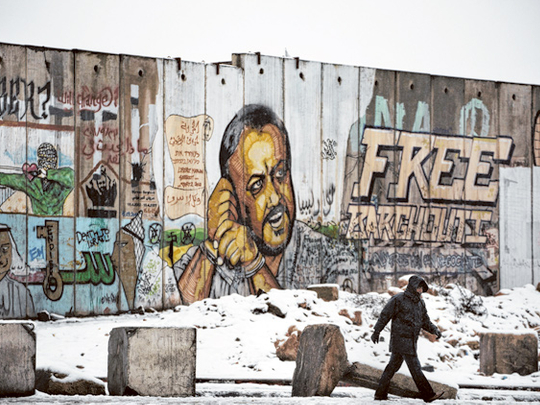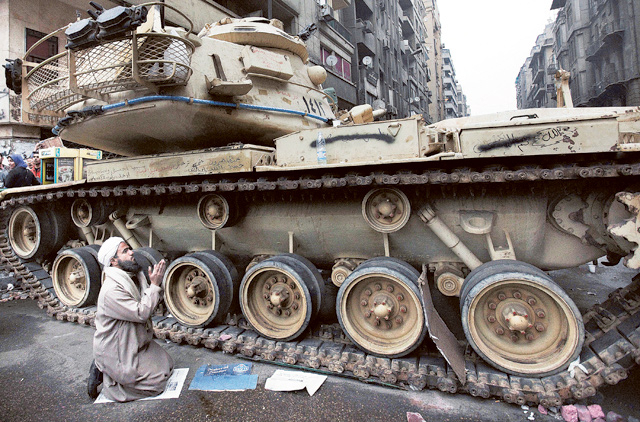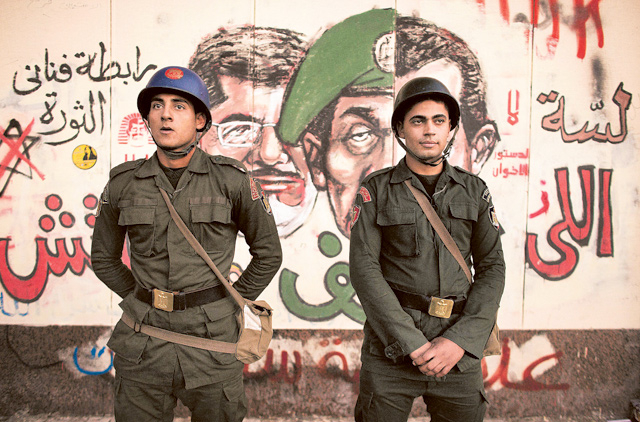
Marco Longari doesn’t just bring us photos from conflict zones; he tells stories. The Italian-born chief photographer for Agence France-Presse in occupied Jerusalem has been in the Middle East for almost six years now and in the past year his photos covering the Gaza Strip, the West Bank, Egypt and Syria have stood out. He has been picked the Best Photographer on the Wires in 2012 by Time magazine. For Longari, photography is more than just a profession, it is a passion. Longari spoke with Weekend Review about the challenges of being a photographer, how it has changed him and what has kept him going all these years. Excerpts:
For most of your career as a photographer, you’ve been going from one conflict zone to the other. How have you been able to do it for such a long time now?
It’s complicated to answer this. I think passion is what drives me — passion for photography and passion for mankind is what drives me to do what I do. It started as a necessity to go out and find out what is happening in the world around me. I started my career working in Kosovo in 1998. I’m from Italy and I was living in Rome. It was really in our backyard and it was the right place for me to start because it was connected to the urge to know what was really happening around me. Then I moved and one thing led to the other. After that I went through other places — Pakistan, Africa — and a whole range of horizons opened for me. This urge to discover and to know and to witness became more and more important and the growing passion for photography and journalism is probably what has been driving me all these years.
How do you think it has changed you?
Of course all the events I witnessed changed me enormously. I think it’s impossible not to be affected by what you see and experience, especially if you choose to experience them first-hand and up close, not from a vantage point but by sharing the ordeal with the people. But I think that, for sure, I grew older beyond the age limit. It’s not an age question, I grew older because these things make you old. It also connected me with mankind in a special way and for that I’m very grateful to the people I meet every day.
It’s emotionally challenging as well because it opens windows to other people’s lives whom you don’t know. Your emotions have to be engaged when you watch somebody else’s life unfolding in front of your life. So it takes a high degree of sanity to retain the balance, lucidity and concentration; otherwise you won’t be doing your job properly. You have to contemplate that you will be emotionally affected, but at the same time you have to be aware that you need to retain self-control because you have to take pictures, tell a story and be a proper witness.
Do the people understand that you are there to document their situation?
I won’t be able to do what I do if the person I’m photographing doesn’t accept me as a witness in their life. So in the beginning there is a moment when you have to reach out for consensus on the other side to be accepted into a different circle of life, which doesn’t belong to you and to which you don’t belong because it’s not your life. This is something that you learn with time and with a lot of trial and error because it’s not something that anybody can teach you and there is no manual you can read on how to do this. It’s a sort of art relation that you have to develop with your own standards and your own ways, and when you’re accepted into someone’s life and you start moving around with extreme care and respect, an even deeper connection develops between you and the people you’re photographing.
Once that’s done, it’s like some kind of magic and you see things through someone else’s eyes and you can start the narration of the story from your point of view but with a feeling that you really, for a second or a moment, belong to another place.
Has it become different for you or more difficult after you became a family man?
The question is not how much it has affected me but how much it has affected them. I think by now my children have understood that their father’s profession takes him away. The complications start when you come back because you’re not just bringing back yourself, but you’re bringing yourself plus the last weeks of intense experience with life-threatening situations. I’ve learnt to deal with this so that they don’t have them to deal with this. Of course, it’s not always easy. It’s extremely complicated. You have to be very honest with yourself to try and understand what is happening inside of you and to avoid putting it on their shoulders.
Most recently you’ve been named the Best Wire Photographer of 2012 by Time magazine. Why do you think your photos from the Middle East this past year have caught their attention?
I’m still thinking they made a big mistake. (He laughs). Well, I think what happened this year is that I’ve been trying to develop a way of telling stories that is extremely personal. I think they saw that there was a personal attention, a personal dedication at what I was doing, which they thought was worth noticing. There are a lot of photographers working in the Middle East and they acknowledge this in their article and I agree with them. All the names they mention did a fantastic job. They’re all colleagues and friends who I have been sharing time and assignments with. I think we all deserve this kind of attention and acknowledgement.
You’ve covered occupied Jerusalem for six years now. How has it been different from any other place you’ve covered? What are the challenges?
This is worlds apart from any other place. First of all, there is a lot of competition. This is a huge challenge because this brings you forward as a professional; you always have to be at your best and you can’t lower your guard for a single second because the flow of news in this part of the world is so constant and the global attention to what happens here brings a load upon your shoulders that is intense. The main thing here is to retain your capacity of being balanced and accurate in your reporting. This means a lot of pressure from the tough competition and very tough work on the ground.
What has been the most moving situation?
You know this can happen to you any moment. It doesn’t have to be particularly intense, but it’s when a certain number of ingredients add up inside of you. The measurement reaches the limit and you can’t deal with it anymore and you break down.
In recent times there’s something that happened to me that moved me, scared me and in some sense also reconciled me with several issues I had with colleagues and the people I used to work with on a daily basis. It was during the last wave of violence at the end of November in Gaza. I was working at the hospital waiting for casualties and we got the news that a missile was launched over (occupied) Jerusalem, where my wife and children were. As soon as I got the news I started to reach for the phone and try to call them but, of course, the line went dead and there was no way to get in touch with them and find out what was happening and if they were safe. This is something I experienced on the other side. I always receive the phone call that something is happening in Gaza, so I immediately call my colleagues and check on them and their families, but I was never in the situation where it happened to me. I saw the expression I had on my face and my body language reflect on my colleagues around me — so I saw in their eyes what I see every day and vice versa. It was a humbling experience for all of us because this brought us together in a common feeling. We’re all professionals, but we all have families, and when this happens, it happens to us in the same way, we all react in the same way.
Where do you think photojournalism is going to take you next?
For sure it’s going to take me elsewhere. We have duty stations that last a number of years and I’ve somehow passed my date for my time here (in occupied Jerusalem), so I’m waiting for a new base.
I think it’s important for a photographer to change place. One should not become attached to one location because if you do you lose your freshness and don’t react in a creative way anymore.




